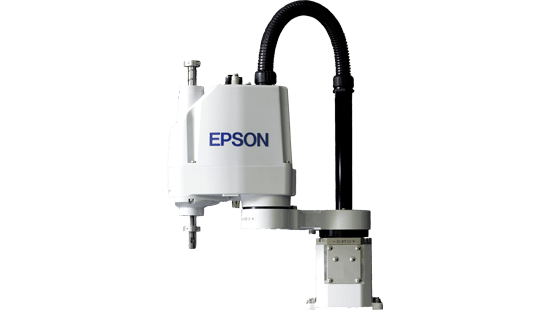Whether you’re a seasoned engineer or someone just beginning to explore the world of robotics, this article will break down the Epson Robot G20 capabilities and show how it’s making waves in industrial automation.
What makes the Epson Robot G20 truly special? Let’s explore its features, its applications, and its role in transforming industries. By the time you reach the end of this article, you’ll see why this innovative robot is an ideal choice for businesses aiming to stay competitive in today’s fast-paced world.
What is the Epson Robot G20?
Let’s start with the basics. The Epson Robot G20 is an industrial “SCARA” robot—essentially, a robot optimized for tasks that require precision and repetitive motion. SCARA stands for Selective Compliance Assembly Robot Arm, but don’t let the technicalities overwhelm you.
The key takeaway is that these robots are exceptionally good at tasks like assembling products, picking and placing objects, and even tending to machines in a factory setting.
What sets the G20 apart is its unique blend of power, precision, and versatility. With a payload capacity of up to 20 kilograms, it can handle heavier objects than many other robots in its class.
It has a compact design, making it easy to fit into tight workspaces, and it’s fast—capable of moving with incredible speed and accuracy. The G20’s software tools are also designed to be user-friendly, so even businesses new to automation won’t struggle with integration.
Why Businesses Choose the Epson Robot G20
But why should a business invest in the Epson Robot G20? The answer lies in its ability to solve real-world problems with effortless efficiency.
1. Enhanced Efficiency
One of the biggest benefits of the G20 is its ability to speed up repetitive tasks, such as assembling small equipment or packaging products. Unlike human workers, the robot doesn’t tire or lose focus.
This consistency means tasks are completed on time, without delays. For example, think of an electronics company assembling circuit boards. The G20 can place tiny components with remarkable speed and accuracy, something that would take a human team much longer.
2. Precision at Its Best
Let’s talk about accuracy. In industries like electronics, medical devices, or automotive manufacturing, even the smallest error can lead to significant costs. Thanks to its advanced motion accuracy, the Epson Robot G20 eliminates mistakes that might result from manual labor.
Imagine it sorting fragile glass components for factory assembly: every movement is precise, ensuring zero damage to delicate items.
3. Unmatched Adaptability
Another powerful feature of the G20 is its adaptability. That means it can take on a wide variety of jobs across different industries. In the food industry, it might be used to sort and pack products with care.
In automotive manufacturing, it could assist in assembling parts for engines. Wherever there’s a repetitive, high-precision task, the G20 can step in and make a difference.
How the Epson Robot G20 Enhances Industrial Automation
Now that we’ve seen what the G20 brings to the table, let’s dig deeper into exactly how it’s applied in industrial automation. Here are three core areas where this robot is delivering impressive results:
1. Assembly Line Efficiency
Picture a busy assembly line, where products are pieced together one small component at a time. This is where the Epson Robot G20 excels. By performing these tasks with rapid precision, it reduces production bottlenecks and improves overall workflow.
For instance, in a factory producing medical devices like surgical tools or diagnostic equipment, the G20 ensures every product meets strict safety and quality standards.
2. Material Handling
The G20 is not just about precision; it’s also strong. Its ability to handle payloads of up to 20 kilograms makes it ideal for moving materials quickly and safely.
Whether it’s loading parts onto a conveyor belt or stacking boxes in a warehouse, the robot is a reliable tool for optimizing material handling. And because it’s compact, it works well even in facilities with limited floor space.
3. Machine Tending
In many factories, machines like CNC (computer numerical control) lathes or injection molding systems need to run continuously. The G20 can step in here as well, tending to these machines by loading raw materials and removing finished products.
This frees up human operators to focus on more complex tasks, which can lead to greater overall productivity.
Conclusion
The Epson Robot G20 isn’t just a machine; it’s a game-changer for businesses looking to embrace industrial automation. By offering efficiency, precision, and adaptability, it helps manufacturers overcome some of their toughest challenges. It’s the perfect partner for businesses that want to stay competitive, reduce costs, and improve workplace safety.
Whether your business is in electronics, automotive manufacturing, or food processing, the G20 has the potential to transform the way you work. Curious to see how it can fit into your operations? Explore more about the Epson Robot G20 and take the first step toward a more efficient, automated future.











